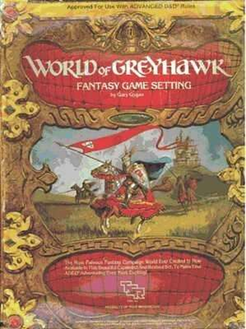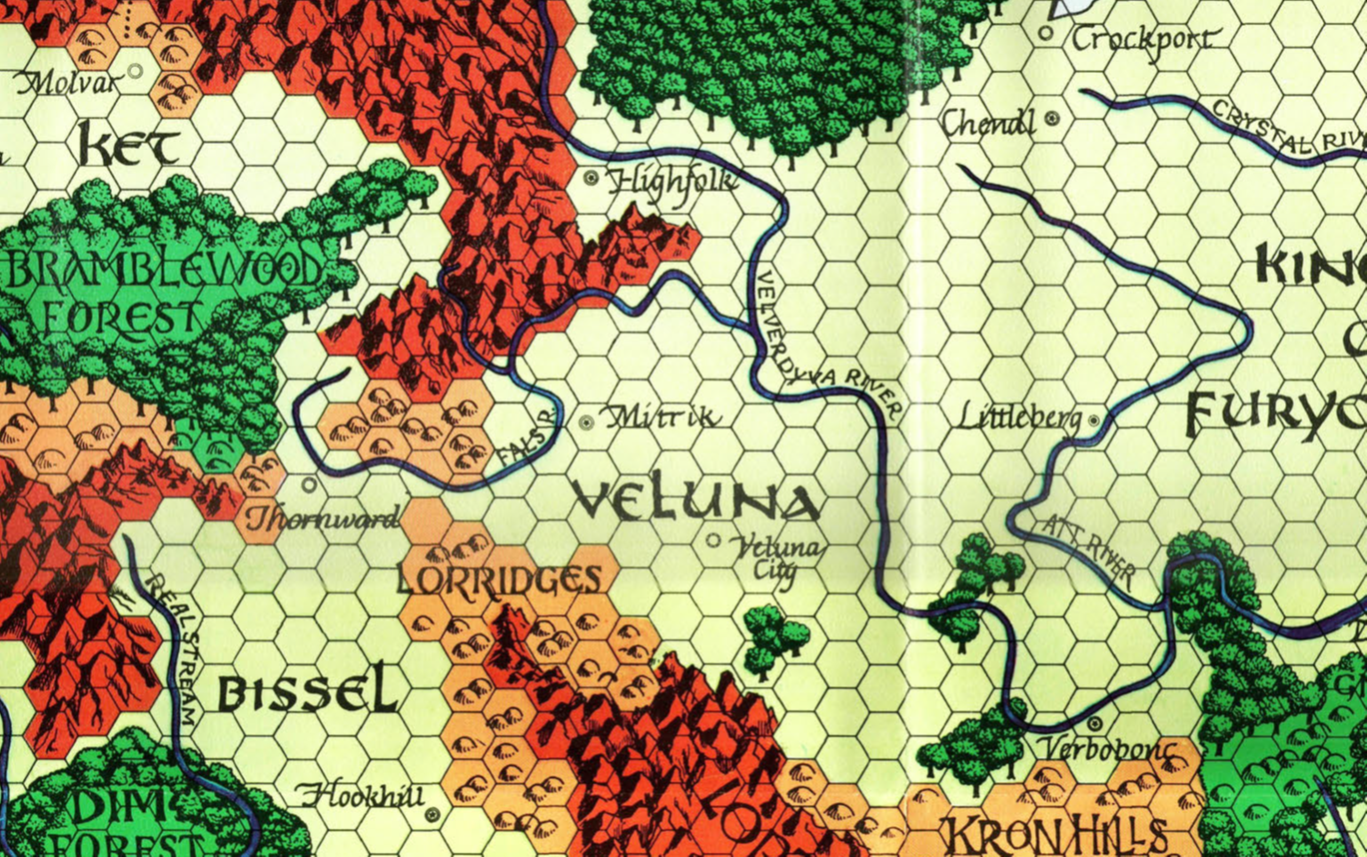
The plot of my ongoing World of Greyhawk game revolves around the nations of Ket and Veluna. This was not the intention when I started the campaign in the City of Greyhawk all those months ago. I expected to do a lot of delving into Castle Greyhawk and then bring up a threat from Iuz that the party would have to stop.
It hasn’t worked that way! Because, as part of the initial moves of Iuz, the characters found themselves exiled from the city.
Many of my campaigns tend to work that way. I don’t have an end point I work towards. Instead, as the players and the world interact, I discover and introduce plot lines which then take over the game (if found interesting).
Exile from Greyhawk
The characters were exiled, but where to? One of the characters was Sir Nil, a paladin of St Cuthbert. I decided that the Arch-Clericy of Veluna worshipped that deity, and sent him there. That also put them close to the Vesve forest – from which another character, a monk of Xan Yae hailed – and let open the possibility of stopping Iuz from invading the forest at some point in the future.
Unfortunately, the player of the monk had to stop playing, leaving those plot threads not as strong. The characters had set up shop in Brusinton, a little border town which lay close by to Ket, one of the major Baklunish kingdoms.
I am quite fascinated with the struggle between nations and cultures in my version of Greyhawk. It isn’t for everyone, but I saw a chance to put some of my thoughts to the test. In Brusinton, the characters were doing a lot of minor quests – I’d set up various options for them to try (or they’d generate their own) – and the ones they didn’t engage in were as important as those they did.
In particular, they failed to deal with some raiders on the road to Ket. I’d earlier revealed that the High Priestess of Xan Yae would be travelling along that road (on her way to Greyhawk, where there’s a strong following to that goddess, something I set up in a campaign in 1997!) And so, with the “bandits” not dealt with, the surprise news came to the players that the High Priestess’s caravan had been attacked and she had been killed!
I emphasise that I hadn’t planned this in advance. I just took the opportunity as it presented itself. The upshot of this was that Ket blamed Veluna for not securing its roads. Veluna blamed the bandits and said it had no responsibility for their action. And, with that, Ket declared war and started looking for allies.

The Struggle of Nations
Part of what I find so interesting about this situation is that there is no “right” side. Both Ket and Veluna are nations you’d be perfectly happy to live in. Neither are “evil” – both hew to neutrality, although my version of Veluna tends a little more to Lawful than Ket does. Whatever that means!
However, the characters – finding themselves supported by the local lord in Brusinton and doing quite well off thereby – are supporting the war effort against Ket. Initial skirmishes reveals that the Ket (aided no doubt by the priests of Xan Yae) had forged an alliance with the Shadow Fey. One group of characters went to disrupt this alliance. They did so, but it took them a year – and we’re before that point at present with the other group of characters.
This group, which consists of most of those who were exiled from Greyhawk, were summoned by the Matriarch of St Cuthbert in Veluna, and told that there was an artefact that could bring an end to this war. And that artefact was in the hands of the djinn in the plane of Air. For the last few sessions (as previously related) the characters have sought that item, and through alliance with the djinn against the Wind Dukes of Aaqa, are now in possession of it.
(This actually saw the party work for both sides; eventually, they gained a valuable item from the Wind Dukes to trade to the djinn for the artefact, but by arrangement and at the suggestion of the characters, the Wind Dukes had enchanted it so it could spy on the djinn!)
However, now they’ve returned with the artefact. What is it? The first part of the Rod of Seven Parts! I may have just launched another MAJOR quest to get me out of determining how to run a war.
Where’s the next part of the Rod? It looks like it’s in Ket! Which, of course means that the party need to travel over a land quite hostile to them. Most of the last session was spent planning and in the initial stages of the expedition – travelling by boat and then crossing the Bramblewood towards Ket. Next session will likely see them trying to avoid patrols as they seek where the next part of the Rod is!
Lessons from Wargaming
One of my other hobbies is wargaming. Of late, I’ve been playing the excellent Volko Ruhnke design, “Nevsky”, which details the fighting between the Teutons and the Russians in about 1240 AD. This is close to the war that will likely be fought between Ket and Veluna. And there are a few interesting points that the game brings up.
The most important is that the armies are incredibly small. At the Battle of the Ice, the most famous engagement, there were possibly only 5000 men on one side and 2500 on the other. In the game, individual lords and the their armies control between 300 and 1000 men, with only occasionally them banding together. So, the scale of the engagements are nowhere near those of the massed battles seen elsewhere.
In addition, feudal service extended only a limited time, perhaps 40 days, extended by plunder or the payment of coin. So, having long extended wars was tricky, or at least the personnel would keep changing.
Finally, there were the aspects of ravaging the land, besieging forts and capturing cities unopposed. Actual head to head battles seem relatively rare (and, through the game’s mechanics, often undesirable.
So, how to incorporate this all into the game? We’ll see. It’s something to consider. In any case, first they must find the Rod!

https://war_of_roses.enacademic.com/15/Armies%2C_Size_of has some good discussion on medieval army sizes (and why the figures in chronicles are generally untrustworthy).